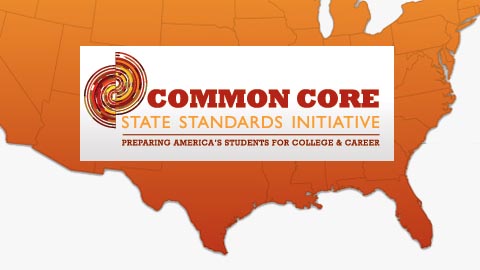MATH: Integrated math classes replace traditional math classes at Poly.
By Claudia Smith, Staff Writer
Over the past few years, redesigned math courses have supplanted traditional math classes at Poly. Math 1, Math 2 and Math 3 replace the traditional courses of Algebra I, Geometry and Algebra II, and this major change raises concerns from teachers and students alike.
Traditionally, math has been taught in sections; all Algebra I concepts were taught in Algebra I, all Geometry concepts in Geometry, and so on. The new system integrates concepts from all classes into one continuous flow. According to the California Department of Education, Math I “includes standards from the conceptual categories of Number and Quantity, Algebra, Functions, Geometry and Statistics and Probability.” The course descriptions of Math II and Math III include the same standards, but they are expanded upon in higher level classes. The same core standards will be taught in every class to ensure that the students truly understand them by the time they finish high school. Common Core mathematics classes combine concepts from all traditional math classes, but the structure is a major departure from the previous way high school math had been taught.
The purpose of the change is to ensure that math concepts are no longer taught separately. These classes are meant to blend concepts from algebra, geometry and statistics to give students a better, fuller understanding of the “why” behind math problems. Perhaps since their educational nascence, students frequently question the relevance of their math lessons; Common Core is aimed at giving them this understanding. David Foster of the Silicon Valley Math Initiative (SVMI), a Silicon Valley effort to improve mathematics that instituted Common Core, explains that “it makes a lot more sense for students to learn some algebra this year and some next year than to say, ‘Stop, do geometry, and then go back to algebra.’” These classes emphasize continuity and understanding, which could benefit Poly math students involved in this program.
Despite these possible benefits, many parents, students and teachers are apprehensive about the change. Many parents are opposed to the implementation of Common Core math classes as it is a departure from the traditional math classes they were taught in high school. There is a pronounced disconnect between people raised in the old system and people raised in this new system, which creates confusion and frustration for students and parents. Hannah Cole (10), a student enrolled in Accelerated Math 2, is frustrated by the way the class is taught. “I feel that we are still only memorizing and using formulas, but the way we learn is not as simple as it could be. There is always a less complicated way to do whatever we are learning,” Cole said. The class’s stress of practical applications detracts from student learning, explains Accelerated Math 2 student Lauren Erickson (10). “The projects and performance tasks don’t do much for me. I just want my teacher to stand up and teach me in a way that we can all understand,” Erickson said. Both students agreed that a more traditional math class would benefit them more, as they feel lost in the real-world applications and teaching style of their class.
In addition to their general confusion in class, students are being put through a system that is still in the making. Math 3, the highest level Common Core class implemented so far, is still being constructed, but tested by current students. While the change is not currently affecting most juniors, the change will majorly impact future classes. Mr. Eric Oravets, who teaches Honors Pre-Calculus, AP Calculus BC and Multivariable Calculus at Poly, shared his concerns about the program. “Common Core structure could restrict higher level math classes, especially Multivariable [Calculus], because kids won’t reach the level of math needed to enter the course,” Oravets said. Math 3, designed for juniors, only teaches up to the equivalent of Algebra II, which would eliminate the need for a Multivariable Calculus class as no student could possibly take all the prerequisite courses needed to enter the class.
However, some educators support this new way of teaching math. Mr. Roger Portillo, who teaches Math 2 and Accelerated Math 2, is in favor of the program. “There is no memorization and regurgitation [of formulas]. Students solve problems and understand how and why they are doing so,” Portillo said. “As the [traditional] classes are being replaced, more freshmen come to Poly better prepared for [Common Core] classes, as they know and understand the concepts.” For instance, when students understand why they are using a certain formula to solve a problem, rather than just memorizing, it’s possible to be more involved in classes. Many of the new math courses require students to participate fully — whether it is in the form of group work, presentations or projects – which encourages them to ask questions and truly expand their knowledge of the concepts.
As students take the new classes as they are being implemented, the courses are constantly improving for future students. Whether one sees the change as positive or negative, only time will tell how the courses impact student learning.

